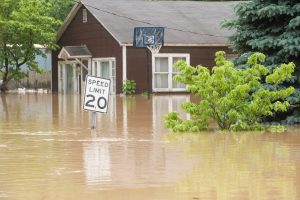Disaster Damage Recovery
 Every few months, a natural disaster hits a community. It’s splashed over the papers and makes everyone wonder, “What would we do if that happened here?” It’s a smart question to ask and one that leads into the topic of natural disasters and insurance coverage.
Every few months, a natural disaster hits a community. It’s splashed over the papers and makes everyone wonder, “What would we do if that happened here?” It’s a smart question to ask and one that leads into the topic of natural disasters and insurance coverage.
As someone who owns property, you should have a better understanding of what type of home insurance for disaster damage recovery you already have and what you may need to acquire.
Common Types of Disaster Damage Recovery on Homeowners’ Insurance
Several types of manmade and natural disasters are covered under most homeowners’ insurance policies, including:
- Fire
- Lightning
- Windstorm
- Hail/Hailstorms
- Explosion
- Riots and civil disturbances
- Damage from aircraft
- Damage from vehicles
- Smoke damage
- Damage from falling objects
- Volcanic eruptions and fallout
This means that if you experience any of these manmade or natural disasters, your claim will have a greater likelihood of being accepted by your insurance carrier.
Uncovered Homeowners’ Insurance Manmade and Natural Disaster Types
Of course, there are other natural disasters that can occur to you and your home, such as:
- Floods
- Earthquake
- Sewage backup
These are among several types of manmade and natural disasters that are not covered by most homeowners’ insurance. If you live in an area where you feel you may be susceptible to this type of disaster, you should always talk to your insurance provider about additional coverage, just in case.
Get Started With Strock Insurance Today
What to Do in the Event of a Manmade or Natural Disaster
Although a majority of homeowners and property owners will never experience a manmade or natural disaster, those who do need to take quick steps to reduce the damage — as well as their stress:
- Get to safety. First and foremost, it’s important to get to a safe place in the event of a disaster, natural or otherwise. Your home may not be secure after lightning strikes or a limb falls through the roof. Be sure you, your family members and your pets are moved to safety immediately.
- Assess and document the damage. You can help your cause by assessing and documenting the damage to your residence. Be sure to take pictures where appropriate. Although you should clean up immediate problems like waterlogged areas, do not take steps to fix drywall, pipes, flooring, etc., before a claims adjuster sees the problem in person.
- Contact your insurance agency to start a claim. Chances are good you’ll be asked to file two claims under your disaster recovery on your homeowners’ insurance policy. One claim is for the structure and the other is for personal belongings. Your insurance agency, such as Strock Insurance, will be able to help you move this process along.
- Be prepared to give detailed information to support your claim. Be sure to tell everything you know, including timelines. Write it down to help you remember. During any interviews, ask questions such as, “How long will it take for me to receive reimbursement?”, “Will reimbursement come to me, or to my preferred contractors?” and “What happens if the claim is denied? What are my rights?”
- Take steps to remedy the situation. After your claim has been successfully filed and accepted, you can start to remedy your property damage. This may take some time. Be patient. Your insurance carrier can help you find professionals to assist or you may be able to use your own plumber, drywaller, contractor, etc.
The goal of your homeowners’ insurance is to protect your assets and help you get back on your feet after any disastrous event. The more you know about your homeowners’ policy, the better you can deal with uncertainties that arise.
Get a Free Quote





